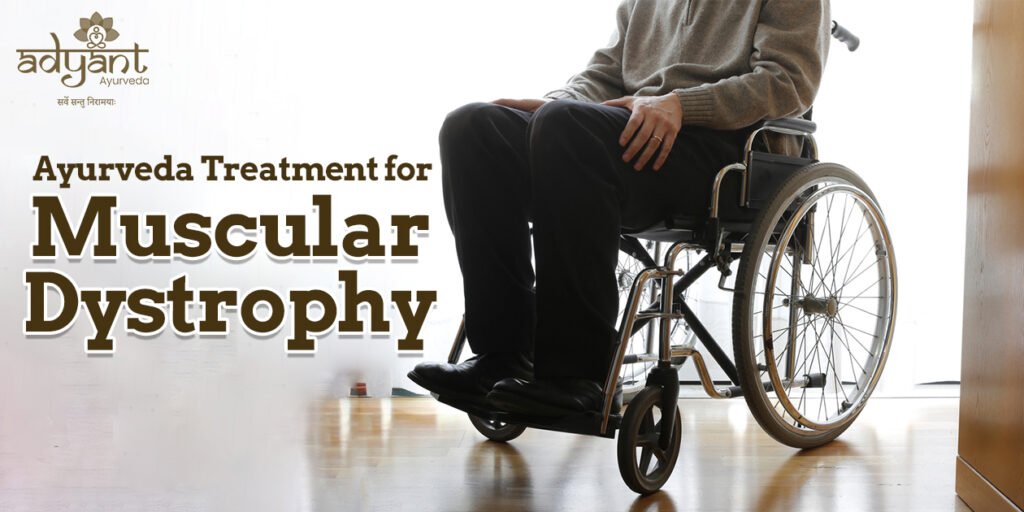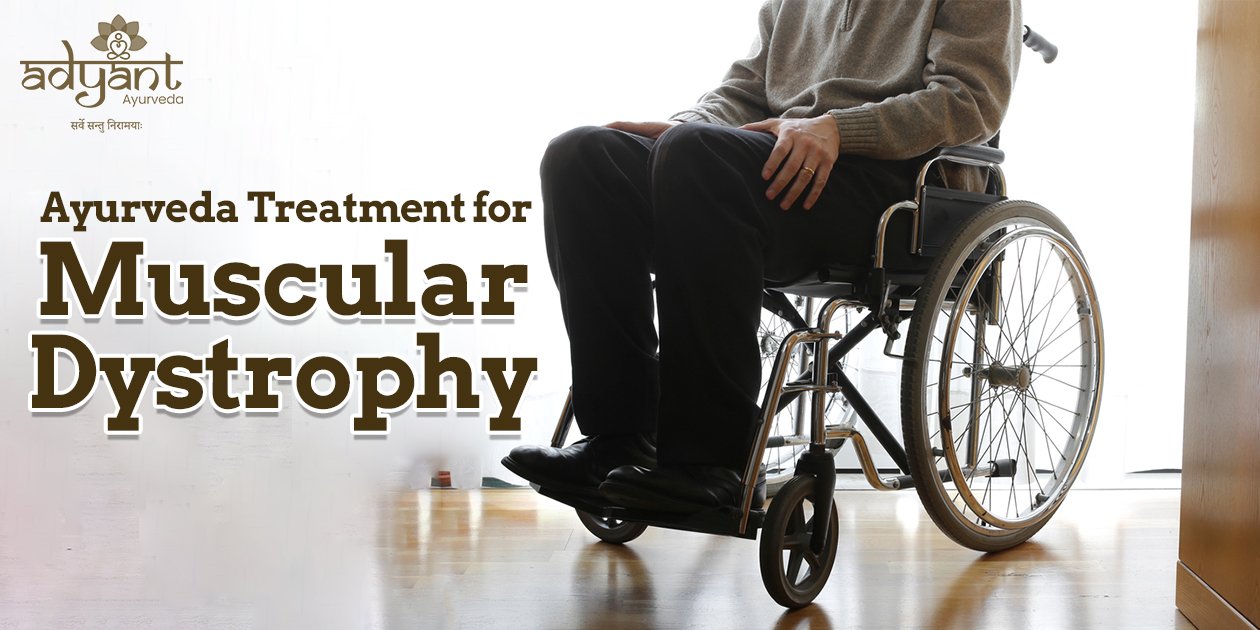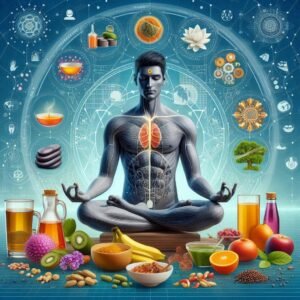
Ayurveda Treatment for Muscular Dystrophy: Muscular dystrophy refers to a group of genetic disorders that cause progressive muscle weakness and degeneration. These conditions primarily affect the muscles, leading to a gradual decline in mobility and strength. Muscular dystrophy can vary in severity and onset, affecting individuals at different stages of life. While modern medicine focuses on symptom management, Ayurveda provides a holistic approach that aims to alleviate symptoms, improve muscle function, and enhance overall well-being.
For a free consultation with top ayurvedic doctors for Muscular Dystrophy Ayurvedic Treatment, download our app from play store “AyurCare“
Types of Muscular Dystrophy
There are several types of muscular dystrophy, each affecting the muscles differently:
- Duchenne Muscular Dystrophy (DMD) – The most common and severe form, primarily affecting young boys. It leads to progressive muscle weakness, often starting in the legs and pelvis and later affecting other body parts. Individuals with DMD may lose the ability to walk in their early teens.
- Becker Muscular Dystrophy (BMD) – A milder form of dystrophy that affects males. Symptoms appear later in life, usually during adolescence or early adulthood, and progress more slowly than DMD.
- Limb-Girdle Muscular Dystrophy (LGMD) – Affects the muscles around the hips and shoulders, causing difficulty in lifting objects and walking.
- Facioscapulohumeral Muscular Dystrophy (FSHD) – Weakens the muscles in the face, shoulders, and upper arms.
- Myotonic Dystrophy – Affects muscle function and causes prolonged muscle contractions.
Ayurvedic Approach to Muscular Dystrophy
Ayurveda views muscular dystrophy as a disorder involving Mamsagata Vata (muscle tissue depletion due to aggravated Vata dosha) and Dhatu Kshaya (degeneration of body tissues). The goal of Ayurvedic treatment is to balance the doshas, nourish the muscles, improve circulation, and enhance cellular regeneration.
You May Also Like: Ayurveda Doshas
Panchakarma Treatment for Muscular Dystrophy
Panchakarma Treatment, a detoxification and rejuvenation therapy, plays a significant role in improving muscular health. Adyant Ayurveda provides customized Panchakarma treatments to address muscular dystrophy symptoms effectively.
1. Abhyanga (Ayurvedic Oil Massage)
- Application of warm medicated oils such as Dhanwantharam Thailam and Mahanarayana Thailam
- Improves blood circulation, reduces muscle stiffness, and enhances relaxation
- Strengthens the neuromuscular system and promotes tissue regeneration
2. Swedana (Herbal Steam Therapy)
- Helps to reduce muscle tension and improve flexibility
- Shastika Shali Pinda Sweda Therapy – A specialized therapy using cooked rice in medicated milk to nourish muscles
- Enhances blood flow, relieves pain, and improves mobility
3. Basti (Medicated Enema Therapy)
- Nourishes and strengthens muscles by delivering medicated oils and herbal decoctions directly to the colon
- Mustadi Rajayapana Basti – Helps in improving muscle tone, reducing inflammation, and enhancing protein absorption
- Acts as a rejuvenation therapy to prevent further muscle degeneration
Ayurvedic Herbs for Muscular Dystrophy
Certain Ayurvedic herbs help manage muscular dystrophy by reducing inflammation, supporting muscle health, and enhancing overall vitality:
- Ashwagandha (Withania somnifera) – Enhances strength, stamina, and muscle regeneration
- Bala (Sida cordifolia) – Acts as a natural muscle tonic and supports neuromuscular coordination
- Guggulu (Commiphora wightii) – Reduces inflammation and improves circulation
- Guduchi (Tinospora cordifolia) – Strengthens the immune system and supports tissue repair
- Shallaki (Boswellia serrata) – Helps in reducing stiffness and joint pain
- Punarnava (Boerhavia diffusa) – Rejuvenates tissues and aids in detoxification
- Triphala – Promotes digestion, detoxifies the body, and supports overall health
Read Also: Ayurvedic uses & Benefits of Ashwagandha
Ayurvedic Diet for Muscular Dystrophy
A balanced diet plays a crucial role in managing muscular dystrophy. Ayurveda emphasizes consuming nourishing foods to support muscle health and reduce Vata aggravation.
Vata-Pacifying Diet
- Include warm, cooked, and easily digestible foods such as soups, porridge, and soft grains
- Use healthy fats like ghee, coconut oil, and sesame oil
- Avoid processed, cold, and dry foods
Pitta-Pacifying Diet
- Focus on cooling foods like fresh fruits, vegetables, and dairy products
- Reduce spicy, acidic, and fried foods
Kapha-Pacifying Diet
- Include light, warming, and stimulating foods like ginger, turmeric, and black pepper
- Limit heavy dairy products and excess sugar
Yoga and Lifestyle Modifications
- Gentle Yoga Asanas like Bhujangasana (Cobra Pose) and Savasana (Corpse Pose) improve flexibility and muscle relaxation
- Pranayama (Breathing Exercises) enhances oxygen flow and energy levels
- Maintaining a consistent daily routine with proper sleep and hydration
Conclusion
Ayurveda Treatment for Muscular Dystrophy plays a crucial role in managing symptoms, improving quality of life, and slowing disease progression. Through therapies like Panchakarma, herbal remedies, and dietary modifications, Ayurveda provides a holistic approach to muscular dystrophy treatment. At Adyant Ayurveda, our expert practitioners offer personalized treatment plans to help individuals with muscular dystrophy lead healthier and more fulfilling lives.
Book Your Appointment Now with Adyant Ayurveda for Muscular Dystrophy Ayurveda Treatment
FAQs on Ayurveda Treatment for Muscular Dystrophy
1. Can Ayurveda cure muscular dystrophy?
No, Ayurveda cannot cure muscular dystrophy, but it can help manage symptoms, reduce inflammation, and improve overall health.
2. How does Panchakarma help in muscular dystrophy?
Panchakarma detoxifies the body, enhances circulation, and strengthens muscles through therapies like Abhyanga, Swedana, and Basti.
3. What Ayurvedic herbs are beneficial for muscular dystrophy?
Herbs like Ashwagandha, Bala, Guggulu, Guduchi, and Shallaki support muscle health and reduce inflammation.
4. Can diet influence muscular dystrophy management?
Yes, a balanced Vata-pacifying diet with nourishing foods like ghee, soups, and cooked grains can help maintain muscle strength.
5. Is yoga beneficial for individuals with muscular dystrophy?
Yes, gentle yoga poses and breathing exercises improve flexibility, relaxation, and overall well-being.
For expert Ayurvedic treatment for muscular dystrophy, consult Adyant Ayurveda today!






